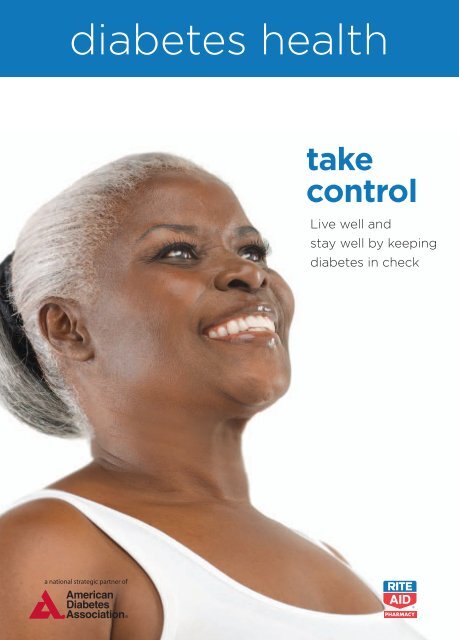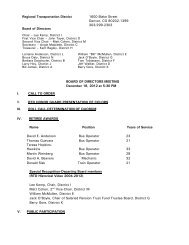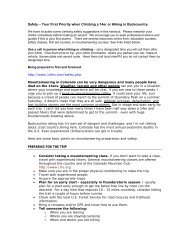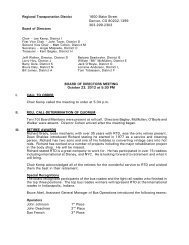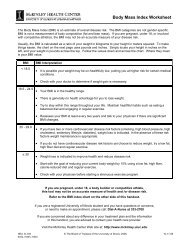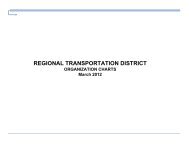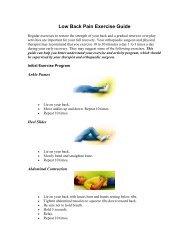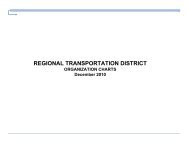diabetes health - RTD
diabetes health - RTD
diabetes health - RTD
- No tags were found...
You also want an ePaper? Increase the reach of your titles
YUMPU automatically turns print PDFs into web optimized ePapers that Google loves.
<strong>diabetes</strong> <strong>health</strong>takecontrolLive well andstay well by keeping<strong>diabetes</strong> in checka national strategic partner of
www.riteaid.com/<strong>diabetes</strong>Join The fighT To sToP diabeTes smRite aid is proud to join the american <strong>diabetes</strong> association in the fightto stop <strong>diabetes</strong> by helping you take control of your <strong>health</strong>. as part ofour national strategic partnership, we’re pleased to offer you this freeresource with information on lowering your risk for type 2 <strong>diabetes</strong> andtips to help you manage <strong>diabetes</strong> if you already have it. Use this guide,along with advice from your <strong>health</strong> care team, to stay <strong>health</strong>ier andstop <strong>diabetes</strong> from taking control of your life.TabLe of ConTenTs3–5 WhaT is diabeTes and aRe YoU aT RisK?6–7 TiPs foR PaRenTs and PaRenTs-To-be8–16 hoW Can YoU manage YoUR diabeTes?17–19 simPLe sTePs To Lose WeighT and eaT RighTa national strategic partner ofThe educational information in this booklet was provided by the american <strong>diabetes</strong> association. it isfor informational purposes only and should not be construed as medical advice. You should alwaysconsult a <strong>health</strong> care professional for assessment and treatment of <strong>diabetes</strong> or its risk factors and before2 undertaking any diet or exercise program.
www.riteaid.com/<strong>diabetes</strong>The deTaiLs on diabeTes<strong>diabetes</strong> is a group of lifelong diseases in which blood glucose, or sugar,levels are too high because the body can't make or appropriately useinsulin. insulin is a hormone that helps the body use or store glucose.Type 1 <strong>diabetes</strong>Type 1, which can’t be prevented, occurs when the body stopsmaking insulin. To survive, people with this type need insulin therapy.Type 1 is most often diagnosed in children, teens, and young adults.Type 2 <strong>diabetes</strong>This type, which can be prevented, is the most common. People withthis type do make insulin, but their bodies don't make enough or don'trespond well to it. Type 2 is most often managedthrough lifestyle changes and oral medication.insulin may be added after the pancreas graduallyloses the ability to produce insulin.Pre<strong>diabetes</strong>The 57 million americans who have pre<strong>diabetes</strong>have higher than normal blood glucose, but nothigh enough to be diagnosed with <strong>diabetes</strong>.Within 10 years, many people with pre<strong>diabetes</strong>will develop type 2 <strong>diabetes</strong>.but there is good news: a <strong>health</strong>y lifestyle canhelp the body better use glucose so it doesn’t buildup in the blood. Research shows that people withpre<strong>diabetes</strong> can lower their risk for type 2 <strong>diabetes</strong>by more than half when they lose 5 to 10 percentof their body weight by exercising and eating right.Check out the At-Risk Weight Chart at right — ifyou weigh the same as or more than the weightlisted across from your height, you may be at riskfor or already have pre<strong>diabetes</strong> or <strong>diabetes</strong>.AT-RISK WEIGHT CHARTHEIGHT WEIGHT4’10” 148 LBS4’11” 153 LBS5’0” 158 LBS5’1” 164 LBS5’2” 169 LBS5’3” 175 LBS5’4” 180 LBS5’5” 186 LBS5’6” 192 LBS5’7” 198 LBS5’8” 203 LBS5’9” 209 LBS5’10” 216 LBS5’11” 222 LBS6’0” 228 LBS6’1” 235 LBS6’2” 241 LBS6’3” 248 LBS6’4” 254 LBS6’5” 261 LBS3
www.riteaid.com/<strong>diabetes</strong>h d i RaRe YoU aT RisK?This simple tool from the american <strong>diabetes</strong> association can help youdetermine your risk for pre<strong>diabetes</strong> or <strong>diabetes</strong>. Using the flow chart,answer the questions until you reach a colored shape. match that witha risk message shown below.STARTHERENOQUESTION:ARE YOU UNDER45 YEARS OF AGE?YESQ: At your height (seeAT-RISK WEIGHT CHART),is your weight equal to ormore than the at-risk weight?YESNOQ: At your height (seeAT-RISK WEIGHT CHART),is your weight equal to ormore than the at-risk weight?NOYESQ: Are you under57 years of age?NO *NOQ: Have you everdeveloped <strong>diabetes</strong>during pregnancy?YESYESQ: Does your mother,father, sister or brotherhave <strong>diabetes</strong>?NOYESQ: Are youCaucasian (white)?YESQ: Have you ever beentold by a doctor or other<strong>health</strong> professional thatyou had hypertension(high blood pressure)?YESNONOLOW RISK: Right now your risk forhaving pre-<strong>diabetes</strong> or <strong>diabetes</strong> is low.But your risk goes up as you get older. Talk toyour doctor about how to keep your risk low.AT RISK FOR PRE-DIABETES: Youare at higher risk for pre-<strong>diabetes</strong>which means your blood glucose is higherthan normal but not high enough to bediagnosed as <strong>diabetes</strong>. Talk to your doctorabout ways to reduce your risk for <strong>diabetes</strong>.HIGH RISK: You are at higher risk forhaving type 2 <strong>diabetes</strong>. However, onlyyour doctor can tell for sure if you do havetype 2 <strong>diabetes</strong>. Talk to your doctor to seeif additional testing is needed.* Your risk for <strong>diabetes</strong> or pre<strong>diabetes</strong> depends on additional risk factors including weight, physicalur risk fo d abetes o iabe4 activity, and blood pressure.
www.riteaid.com/<strong>diabetes</strong>simPLe habiTs To LoWeR YoUR RisKsmall steps do add up! You don’t need special foods or an olympianlikeregimen to make a difference. You can lower your risk for type 2<strong>diabetes</strong> or delay its onset by making some sensible adjustments.Eat betterfine-tune your eating habits with these calorieandfat-cutting strategies:• Replace some of the meat in your diet with avariety of vegetables and whole grains.• Replace desserts and snacks with fresh fruit.• Compare food labels and choose alternativesthat are lower in calories, fat, and sugar, suchas nonfat milk instead of 2 percent.• Use smaller plates to help shrink your portion sizes.• split large restaurant portions with a friend or take half home.Get fitPump up your activity level with these tips:• Walk every chance you get — to work or onerrands, with co-workers during a break, andbefore or after dinner.• socialize with family and friends by beingactive together. Ride bikes, play soccer orbasketball, or dance.• do housework and yard work with vigor.• break exercise into 10-minute segments to fit itinto your schedule.• if you’ve been inactive, begin by getting yourdoctor’s advice about what and how much to do.Choose one action you can take today to start reducing your risk.Setting daily, weekly, and monthly goals can help you move graduallytoward a <strong>health</strong>ier lifestyle.5
www.riteaid.com/<strong>diabetes</strong>When diabeTes deveLoPsdURing PRegnanCYgestational <strong>diabetes</strong> is the form of <strong>diabetes</strong> thatdevelops during pregnancy. it can cause manyproblems, from high blood pressure to deliverycomplications. The good news is that both motherand baby can often be <strong>health</strong>y by mom following a special meal planand being physically active.Risky businessWithout treatment, gestational <strong>diabetes</strong> carries some serious risks,including:• high blood pressure and sudden high blood pressure (preeclampsia)in the mother• The baby being so large that the mother must have a cesarean section• breathing and blood glucose problems in the baby after birthEnsure a <strong>health</strong>y pregnancymany women with gestational <strong>diabetes</strong> can keep their blood glucoseunder control by adopting <strong>health</strong>y eating and exercise patterns. somealso need testing and insulin injections to control their blood glucose.Work with your <strong>diabetes</strong> educator to design a plan to keep your bloodglucose levels in the target range. many plans recommend that you:• eat three small meals and one to three snacks a day.• Count your carbohydrates. Your meal plan should tell you when andhow many to have at meals and snacks.• Limit sweets.• Try to be active for 30 minutes or more, at least five days a week.Walking and swimming are good activities for pregnant women.6although gestational <strong>diabetes</strong> often disappears after delivery, thosewith the condition have an increased risk of developing it again in afuture pregnancy and type 2 <strong>diabetes</strong> later in life. getting to andmaintaining a <strong>health</strong>y weight, eating right, and being active 30 minutesa day on most days of the week are important preventive steps.
www.riteaid.com/<strong>diabetes</strong>baTTLing ChiLdhoodobesiTY and diabeTesThese days, lots of kids — many who are overweight and inactive— are developing type 2 <strong>diabetes</strong>, putting them at risk forcomplications like early heart disease.5 ways to keep kids <strong>diabetes</strong>-freeThese simple lifestyle changes can help prevent childhood obesity,staving off <strong>diabetes</strong> and many other <strong>health</strong> problems:1 Lead by example. eat <strong>health</strong>y and be active.2 Dine together. Regular family meals can foster <strong>health</strong>y eatinghabits. and research shows that kids whose families eat togetherget more fruits and veggies, have improved selfesteemand better grades, and are less likely tosmoke, drink, use drugs, or get into fights.3 Encourage exercise. Kids need at least one hourof physical activity every day.4 Ask for help. if you think your child is overweight,talk with his or her doctor.5 Know the symptoms. People with type 2<strong>diabetes</strong> often don't have symptoms, but see thedoctor right away if your child shows signsof frequent urination, unexplained weight loss,blurred vision, fatigue, nausea, excessive thirst,or cuts and bruises that are slow to heal.Help them copeKids who've been diagnosed with <strong>diabetes</strong> may feelemotional, stressed, or left out. a little parentalsupport can go a long way. here's how you can help:• Cook the same <strong>health</strong>y foods for the whole family.• Plan family walks to help kids get 60 minutes ofexercise a day.• give teens some space once they've shown theycan keep their glucose under control.7
www.riteaid.com/<strong>diabetes</strong>KeeP iT in CheCKif you have <strong>diabetes</strong>, you need to keep up with several tests during theyear to find out how your glucose levels are affecting your overall <strong>health</strong>.Use the American Diabetes Association’s Checkup Checklist below tokeep track of all the tests you need and how often you need them.CHECKuP CHECKLiSTThe American Diabetes Associationrecommends the following for adults with<strong>diabetes</strong>:A1C Test(estimated average blood glucose)At least twice a year. If yourtreatment has changed or you’re not achievingyour blood glucose goals, up to four times a year.Dentist VisitTwice a yearAnnual Tests, Shots, and VisitsFlu vaccineFasting lipid profile(cholesterol and triglycerides)Urine albumin excretion(kidney function)Serum creatinine(kidney function)Dilated eye examFoot exam including neuropathytesting with monofilamentOther Screenings and VaccinationsPAD (peripheral arterial disease) screeningfor those at riskPPV (pneumococcal polysaccharide vaccine).A one-time vaccine for most, but peopleover 65 will need to get it again.aC bKnOW YOuRDiAbETES AbCsKeep your ABCs ontarget to lower yourheart disease risk.A: A1C level —your average bloodglucose for the pasttwo to three months —should be less than 7.*b: blood pressureis best below 130/80.*C: Cholesterol level —the bad type, LDL —should be no higherthan 100.**Individual targets vary.8
www.riteaid.com/<strong>diabetes</strong>is YoUR gLUCose UndeR ConTRoL?for people with <strong>diabetes</strong>, food, activity, and stress can cause glucoselevels to change throughout the day. Watching your glucose levelclosely can help you avoid hypoglycemia (low blood glucose) andhyperglycemia (high blood glucose).When your glucose level is too high too often, it can lead toproblems with your kidneys, heart, eyes, and nerves. frequent checkscan help prevent damage to these parts of the body.When should you check?many people do daily glucose checks before and after meals and atbedtime. Your doctor will help you find the best routine for you.Ask for helpshare your routine with a friend or family member —a loved one who knows the ropes can help you stickto your schedule. sometimes you may need to dounscheduled checks. being sick, for example, cancause glucose to rise, which calls for more frequenttesting. someone may need to remind you or even doit for you. You or a member of your care team canshow family members how to use the test equipment.There are many blood glucose monitoring systemsto choose from. Talk with your Rite Aid pharmacist tofind one that’s right for you.Many Rite Aid pharmacists are <strong>diabetes</strong>care specialists who provide <strong>diabetes</strong>self-management education (DSME) — aseries of educational programs to help youstay in charge of your <strong>health</strong>.9
Blood GlucoseJournalMonth/YearAmerICAn DIABeTeSASSoCIATIonBLooD GLUCoSe TArGeTSBefore meals:70 to 130 mg/dLTwo hours after meals:below 180 mg/dLmy TArGeTSBefore meals:Two hours after meals:my DoCTorName:Phone:Keeping a log of yourTrack it! daily glucose levelshelps you see howfREEwell your <strong>diabetes</strong> careplan is working. It’s easy to keeptrack with the American DiabetesAssociation’s blood Glucose Journal.Download additional pages for yourjournal at www.riteaid.com/<strong>diabetes</strong>.DAY bREAKfAST LunCHbefore After before After12345678910111213141516171819202122232425262728293031
DinnER niGHT OTHER OTHER COMMEnTS(note exercise, illness, stress, special foods,orbefore Afterother factors that may affect your numbers)
www.riteaid.com/<strong>diabetes</strong>maKe beTTeR sense of YoUR a1C TesTWiTh eagif you have <strong>diabetes</strong>, you need an a1C test atleast twice a year to give you a picture of youraverage blood glucose control for the past twoto three months. This helps you see how wellyour treatment plan is working.Use the chart at right to see how your a1Ccompares with your estimated averageglucose (eag), a new format for giving a1Cresults in milligrams per deciliter (mg/dL). Thisis the same format you see when you checkyour glucose level with a meter.need help understanding your test results?Ask your doctor or Rite Aid pharmacist to helpexplain them.A1C% eAGmg/dL5 975.5 1116 1266.5 1407 1547.5 1698 1838.5 1979 2129.5 22610 24010.5 25511 26911.5 28312 298beYond gLUCose:good diabeTes CaRehere are some helpful tips for taking good care of yourself, from headto toe:• floss and brush your teeth and gums after each meal and snack tohelp prevent gum disease.• defend against dry skin by keeping your skin clean and moist andapplying lotion regularly.• Wash your feet in warm water every day, but don’t soak them.Check daily for sores or other problems. Use moisturizing lotion, butnot in between toes.12Talk with your Rite Aid pharmacist about the oral and skin careproducts that may work best for you.
my meds at a Glancehere’s a way to make sure you’re on top of your current medication regimen. Carrythis list in your wallet, and you’ll always have it handy to share with <strong>health</strong> careproviders.MEDiCATiOn nAME DOSAGE WHEn TO TAKE PRESCRibED bY12345678910111213141516RiTE AiD PHARMACY PHOnE nuMbER:Track it!fREEit’s a good idea to keep a list of all the medications youtake. The American Diabetes Association’s My Meds at aGlance chart makes it easy. ask your Rite aid pharmacistfor a printout of your medications to help you fill out thischart. be sure to keep it updated. You can downloadadditional copies at www.riteaid.com/<strong>diabetes</strong>.13
www.riteaid.com/<strong>diabetes</strong>managing diabeTesand bLood PRessURePeople with <strong>diabetes</strong> need to be vigilant about their blood pressure.nearly two out of three people with <strong>diabetes</strong> have high bloodpressure. This doubles cardiovascular disease risk, which can lead toheart attack and stroke. People with both diseases are also morelikely to develop nerve, kidney, and eye damage.Stay in controlhaving blood pressure tested each time you see the doctor andtaking steps to keep it in check can help prevent such <strong>health</strong>problems. if you have <strong>diabetes</strong>, doctors recommend keeping yourblood pressure below 130/80. <strong>health</strong>y habits to manage bloodpressure include:• Controlling weight• exercising regularly• eating a <strong>health</strong>y, low-salt diet• avoiding smoking• Limiting alcoholic drinks to one dailyWhen you need medicationif these steps don’t help, your doctor mayalso prescribe medication. some bloodpressure medications can affect how wellyou manage your <strong>diabetes</strong>. beta-blockers,for example, may hide a heart rate increase inresponse to low blood glucose, while aCeinhibitorsand aRbs are recommended fortheir benefits. be sure your doctor knows youhave <strong>diabetes</strong> before prescribing youmedication.Talk with your doctor and Rite Aid pharmacist aboutthe benefits and side effects of specific drugs.14
www.riteaid.com/<strong>diabetes</strong>beaT KidneY diseaseWiTh RegULaR CheCKUPsThey don’t have glamorous jobs, but yourkidneys deserve recognition. These fist-sizedorgans keep your blood clean by tossing outwaste and extra water. but over time, <strong>diabetes</strong>can damage small blood vessels inside thekidneys, lessening their ability to filter toxinsfrom your blood. Left untreated, your kidneyscould fail.nip it in the budif you have <strong>diabetes</strong> and start to developkidney problems, you may not even know it.a yearly urine test can check for smallincreases of a protein called albumin — oneof the early signs of kidney disease.if your kidneys aren’t working up to speed,your doctor can prescribe medicines to slowdown kidney disease.5 steps to <strong>health</strong>y kidneysmany of the things you do to keep your<strong>diabetes</strong> in check are also good for yourkidneys:1 stick to a <strong>health</strong>y eating plan.2 Take your <strong>diabetes</strong> medicine as directed.3 be active for a half hour or more, at leastfive days a week.4 Keep your blood glucose in your targetrange.5 get your blood pressure checked eachtime you see the doctor.A SHOT ATGOOD HEALTHCatching the flu is neverfun. But people with<strong>diabetes</strong> have a higherrisk for seriouscomplications, such aspneumonia and evendeath.Help protect yourselfby getting a yearly flushot. And get apneumonia shot if youhaven’t already — oneshot usually protectsyou for life.So roll up your sleeve— it could save your life!Rite Aid immunizingpharmacists provideflu and pneumoniashots at selectRite Aid stores. Visitwww.riteaid.com tofind a store near you.15
www.riteaid.com/<strong>diabetes</strong>6 TiPs foRsafe TRaveLif you have <strong>diabetes</strong>,you’ll need to plan morethan your itinerary whenyou travel across the country orabroad. These tips can help youprepare for safe travel:1 meet with your doctor before you leaveto get extra prescriptions, medications,any needed vaccinations ordocumentation, and advice onmanaging <strong>diabetes</strong> while away fromhome.2 Pack plenty of extra medicine andblood testing supplies — at least twiceas much as you think you need.3 Check your blood glucose frequentlywhile traveling, including before andtwo to three hours after meals.4 arrange ahead of time for a meal thatfits your meal plan if you’re traveling byplane, train, or ship.5 Carry appropriate snacks with you incase meals are late.6 Wash your hands often to avoidgerms. Pack an alcohol-based handsanitizer for times when soap andwater aren’t available.PREPARE fOREMERGEnCiESeveryone should have aplan in place in case of anemergency. For someonewith <strong>diabetes</strong>, there aresome extra things toconsider.Store at least three days'worth of <strong>diabetes</strong> supplies,such as oral medication,insulin, extra batteries foryour meter, a quick-actingsource of glucose, and anemergency contacts list.make sure your supply kitis easy to identify and findduring an emergency.16
www.riteaid.com/<strong>diabetes</strong>Lose WeighTThe simPLe WaYsmall lifestyle changes can help you shedpounds and lower your risk for <strong>diabetes</strong>.and even a modest weight loss canimprove your blood glucose levels, whichis good news if you already have <strong>diabetes</strong>.Losing weight doesn’t require radicalchanges. These simple strategies can helpyou lose weight and keep it off:• Add soup to the menu. having a brothbasedor non-cream-based soup for afirst course may help you eat fewercalories, while still feeling satisfied at theend of a meal. so slurp away!• Choose <strong>health</strong>y drinks. avoid sugarsweeteneddrinks and opt for water orsugar-free tea, which help to cut caloriesand avoid added sugar.and consider this: a 12-ounce can ofsoda contains 143 calories and theequivalent of 10 teaspoons of sugar. bydrinking one less can a day for a year,you could consume 52,195 fewer calories.That translates into a weight loss ofnearly 15 pounds!• Get active. getting moderate exercise atleast 30 minutes a day can help youcontrol your weight and blood glucose.COunTinG CARbSFoods with carbohydratesraise your blood glucose. Bytracking the amount you eatand when you eat them, youcan help keep your levels inthe target range.Check food labels forthe serving size and totalcarbohydrate amount todetermine how many carbsare in that serving size.Know the amount of carbsyou can eat and adjust yourportion size to match.Work with your <strong>diabetes</strong>educator to decide whatamount is best for you.find <strong>health</strong>y recipes from ourpartner at dLife by visitingwww.riteaid.com/<strong>diabetes</strong>.17
www.riteaid.com/<strong>diabetes</strong>hoW To PoRTion YoUR PLaTe<strong>health</strong>y eating can help you manage your <strong>diabetes</strong> and lose weight,but knowing which foods to eat can seem daunting. Luckily, thesolution is simple. Properly portioning your plate helps you eat more<strong>health</strong>y foods and limit those high in fat and calories.Here’s how it works:1 Take a dinner plate and draw an imaginary line down the middle.2 split one side in half again so you have three sections.3 fill each section with these foods:Veggiesfill half of your plate withnon-starchy veggies likebroccoli, carrots, green beans,lettuce, peppers, andtomatoes.CarbsThis small section can contain starchyfoods. Whole-grain products are richin vitamins, minerals, and fiber. Trybrown rice and whole wheat bread,pasta, and crackers. starchyvegetables like potatoes, squash,peas, and corn are also options.Sidesadd an 8 oz. glass ofnonfat milk and a pieceof fruit for a <strong>health</strong>y,well-balanced meal.Meats and meatsubstitutesLeaner cuts of meat haveless saturated fat andcalories. Try salmon, cod,and tuna, and seafood likeshrimp and clams. othergood choices are skinlesschicken and turkey andlean cuts of beef and pork.don’t eat meat? Try eggs,tofu, and low-fat cheese.18
What I Ate This WeekWeek of:Track it!fREETracking what you eat can help you pinpoint opportunities for improvement.for example, if you spot an afternoon snacking habit, replace chips with somebaby carrots. The American Diabetes Association’s What i Ate This Weekchart can help. visit www.riteaid.com/<strong>diabetes</strong> to get additional copies.bREAKfAST LunCH DinnER SnACK/OTHER nOTESSUNDAYCalories: Calories: Calories: Calories: Total calories:MONDAYCalories: Calories: Calories: Calories: Total calories:TUESDAYCalories: Calories: Calories: Calories: Total calories:WEDNESDAYCalories: Calories: Calories: Calories: Total calories:THURSDAYCalories: Calories: Calories: Calories: Total calories:FRIDAYCalories: Calories: Calories: Calories: Total calories:SATURDAYCalories: Calories: Calories: Calories: Total calories:
Help Rite Aid Stop Diabetesin the next 24 hours, 4,320 new cases of <strong>diabetes</strong> will be diagnosed.The time to stop <strong>diabetes</strong> is now. Join the american <strong>diabetes</strong>association and Rite aid as we work to find a cure and reduce theburden of <strong>diabetes</strong> so all people affected by <strong>diabetes</strong> can livehappier, <strong>health</strong>ier lives.• SHARE: share your stories, experiences, and hope for a cure. Yourpersonal story may help inspire others to join the movement andmake a difference in the fight to stop <strong>diabetes</strong>.• ACT: find ways to volunteer locally and participate in fundraisingevents and grassroots advocacy activities. Your actions can helpadvance the fight.• LEARn: Take the risk test and learn your risk of developing <strong>diabetes</strong>.if you have <strong>diabetes</strong>, learn how to manage your condition. Talk withyour Rite aid pharmacist and visit www.riteaid.com/<strong>diabetes</strong>.• GiVE: Your time and passion can make a big difference in yourcommunity in the fight to stop <strong>diabetes</strong>. financial contributionscan also help fund education, outreach, advocacy, and criticalresearch for a cure.Visit www.riteaid.com/<strong>diabetes</strong> to learn moreabout how you can join the fight to Stop Diabetes.a proud sponsor of#460864 rev 8/10 form #2002


